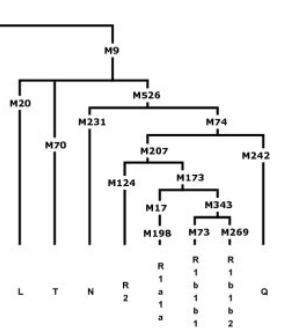If you notice the branching of the CT superhaplogroup
You see Africa is basically Y-DNA E (with later additions)
While CF is Eurasian.
Picture an imaginary map of Y-DNA DE in your head and realize, Africa would have a dark color.
While just entering Eurasia, right from Egypt into Israel, frequencies would sharply decline from 50% to 15%/20% , then it becomes negligible in Eurasia.
Conversely Y-DNA CF would paint all the world but Africa (really) dark, and right when you get close to the Mediterranean and the Red Sea ("the border" between the 2 haplogroups), it becomes very light instantly.
As bonus track, I have to say E1b1b seems to live exactly in the African side following this "border" area (in the Sahara and the Nile, and stops in Somalia where the gulf of Aden is)
Then C appears to be from the European plain/ Eurasian steppe (from France to Mongolia).
I think this because of all the European paleolithic remains.
While F is from the Middle East (F* exists in tribal indians, but there was an European Paleolithic F so... F is likely from the Middle East)
Then the branching goes G in West Asia, H around Pakistan, IJK north of them.
K from Central Asia to the east (K* today is Central Asian Turquic).
And IJ went west of K and then branched between Europe and the Middle East.
FEMALE haplogroup U is the same.
U6 is African (at most in the Balkans or the Caucasus)
U5 European
And U2'3'4'7'8'9 Asian Middle-East
(U4 and U2, the 2 European ones, are conveniently in Eastern Europe today, just north of the Middle East)
You see Africa is basically Y-DNA E (with later additions)
While CF is Eurasian.
Picture an imaginary map of Y-DNA DE in your head and realize, Africa would have a dark color.
While just entering Eurasia, right from Egypt into Israel, frequencies would sharply decline from 50% to 15%/20% , then it becomes negligible in Eurasia.
Conversely Y-DNA CF would paint all the world but Africa (really) dark, and right when you get close to the Mediterranean and the Red Sea ("the border" between the 2 haplogroups), it becomes very light instantly.
As bonus track, I have to say E1b1b seems to live exactly in the African side following this "border" area (in the Sahara and the Nile, and stops in Somalia where the gulf of Aden is)
Then C appears to be from the European plain/ Eurasian steppe (from France to Mongolia).
I think this because of all the European paleolithic remains.
While F is from the Middle East (F* exists in tribal indians, but there was an European Paleolithic F so... F is likely from the Middle East)
Then the branching goes G in West Asia, H around Pakistan, IJK north of them.
K from Central Asia to the east (K* today is Central Asian Turquic).
And IJ went west of K and then branched between Europe and the Middle East.
FEMALE haplogroup U is the same.
U6 is African (at most in the Balkans or the Caucasus)
U5 European
And U2'3'4'7'8'9 Asian Middle-East
(U4 and U2, the 2 European ones, are conveniently in Eastern Europe today, just north of the Middle East)
Last edited:


